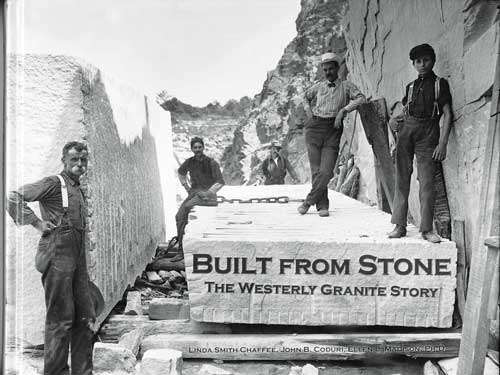Built From Westerly Granite

Wonder what Green Hall, the monolith on the plaza of the Carothers Library, and the base of the URI Ram statue in front of the Memorial Union share in common?
All three structures on the Kingston Campus were created with granite quarried in nearby Westerly, R.I.
A sundial, a gift from the Class of 1903, serves as a focal point in the brick walkway to the President’s house. Its granite round base, yep you guessed it, comes from Westerly as does the stone entrance to the Deiter Hammerschlag Mall that leads to the Carothers Library.
Westerly residents John B. Coduri ’69 and Ellen L. Madison, Ph.D. ’86, in collaboration with Brown alumna Linda Smith Chafee, aptly captured the town’s proud granite history in their comprehensive book, BUILT FROM STONE, The Westerly Granite Story.
Green Hall was built in 1937. Restored in 2003 thanks to the efforts of Henry Nardone ’43 of Westerly (who spearheaded the fundraising campaign), the stately Georgian Revival building is located near the center of the Kingston Campus.
The Narragansett Monolith, a 12-foot granite block dedicated in 1994, is located on the west end of the library plaza. The monument’s inscription, NIPPENOWANTAWEM, NIPPENOWANTAWEM, MEQUANAMIINNEA, MEQUANAMIINNEA (I Am Of Another Language, Remember Me), is carved twice in raised letters of various depths that appear to emerge and then recede into the stone, symbolic of the emergence and decline of Rhode Island’s indigenous people.
The iconic Ram statue stands comfortably on a granite base donated by the late Angelo Gencarelli ’22 who was also from Westerly. The statue, a gift from the Class of 1958, often appears in photos surrounded by students.
—Jan Wenzel ’87
 Home
Home Browse
Browse Close
Close Events
Events Maps
Maps Email
Email Brightspace
Brightspace eCampus
eCampus


